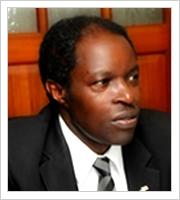It is undeniable that medics at the frontline of the Ebola fight work in an extremely hot and stressful environment as the full-body Personal Protective Equipment (PPE ) which is necessary to protect them just does not go well with the humid sub-tropical, tropical, and equatorial climates. The medics are at risk of dehydration and cannot spend more than a couple of hours treating patients. Frequent breaks to rehydrate increase the chances of missing the guidelines on PPE. The heat and stress also compromises the quality of the service. Patients too are not spared from the stress and sweating caused by the heat which further increases their risk of dehydration and other bio-chemical as well as physiological imbalances.
Now, ResilientAfrica Network (RAN) and Makerere University College of Health Sciences School of Public Health are currently working to design the next generation ergonomic tent for the management of Ebola patients. The tent being designed is expected to not only stand the hot African climate but provide a versatile and comfortable environment for both medical personnel and patients at as little cost as possible. The design of the ergonomic tent is being facilitated by The United States Agency for International Development (USAID) through the Fighting Ebola: A Grand Challenge for Development
Patricia Mtungila,UbuntuNet Alliance Communications Officer and Harriet Adong, RAN Communications Manager, talked to Prof. William Bazeyo the Dean Makerere University School of Public Health, an Associate Professor of Occupational Medicine who will together with Dr. Roy William Mageya, a Lecturer at the School of Public Health and Deputy Chief of Party at RAN, lead a multi-disciplinary team of students and faculty from the College of Health Sciences School of Public Health, and the College of Engineering, Design and Art (CEDAT) at Makerere University, Uganda to realize this task.
Q.1. A new design for the Ebola treatment tent, what is lacking in the current environment in the Ebola treatment tent?
The current, tents are quite poor at heat and air exchange when fully enclosed. The materials used in manufacturing the tent have poor air and temperature exchange, trapping hot air underneath, and creating a temperature build-up. PVC linings are continuous, without aeration pores. The shape of the tent and the un-interrupted walls also promote a constant build-up of heat within the tent cavity, exacerbated by the poor air exchange.
Because of the heat build-up, healthcare workers involved in management of suspected and confirmed Ebola cases in humid sub-tropical, tropical, and equatorial climates work under very stressful conditions characterized by extreme heat and humidity predisposing them to heat stress and its associated complications. In addition, Patients too have to endure the same conditions.
Q.2. Tell us about your team and the general feel knowing that you could provide Africa’s next big innovation in the Ebola fight and save thousands.
We are a multi-disciplinary team of students and faculty from the School of Public Health College of Health Sciences and the College of Engineering, Design and Art (CEDAT) at Makerere University, Uganda.
As a team we feel excited and extremely privileged to have the opportunity to save thousands of lives through developing and prototyping the “next generation ergonomic tent” that will transcend the current tents that were not designed for human habitation in hot climates.
Q.3. In your view, does Africa, Uganda have what it takes to provide these next big solution in the Ebola fight?
Yes. Africa and in particular Uganda, has what it takes to develop the next big solutions not only in the Ebola fight but solutions that are responsive to the humanitarian work as a whole. We have leading teaching institutions that implement trans-disciplinary curriculums designed to develop global health solutions that cut across several pertinent disciplines.
For example: Makerere University School of Public Health has been at the center of training, research and community service in control of outbreaks of major epidemic prone diseases, supporting the Ministry of Health by providing the requisite technical expertise. We have been involved in mass training activities to increase surge capacity for emerging pandemic threats and in response to commonly occurring disasters in the region. The school implements several Master’s Degree programs built on the Public Health Schools without Walls model.
Q. 4. Any other thoughts on innovation from Africa for the fight against Ebola?
Africa has the potential to harness the knowledge and creativity that exists across the different African institutions to develop, prototype and bring to scale transformative innovations in the fight against Ebola.
Several innovations are in the pipeline for instance IBM Research- Africa located at the Catholic University of Eastern Africa in Nairobi has launched an innovative community education platform that facilitates two way communications between Public Health Officials and citizens using basic mobile phones to generate real-time, on-the ground information about public health perception and community needs.
Prof Bazeyo is also the Lab Director/Chief of party for the U.S Global Development Lab’s Higher Education Solutions Network (HESN)-ResilientAfrica Network (RAN). He has over 20 years teaching experience at Makerere University, is a Medical Doctor from Makerere University and holds an M.Med in Occupational Health obtained from University of Singapore in Singapore. For more on research and education networking in Uganda you may also see Research and Education Network for Uganda(RENU).

